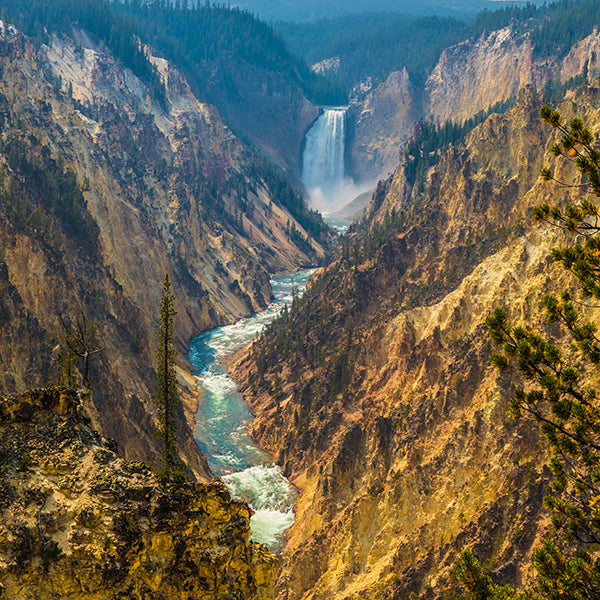
Yellowstone National Park
Robert DeckerYellowstone, the first National Park in the U.S. and widely held to be the first national park in the world, was established by the U.S. Congress and signed into law by President Ulysses S. Grant on March 1, 1872. Straddling the borders of Montana and Wyoming, according the the act, Yellowstone was established "as a public park or pleasuring-ground for the benefit and enjoyment of the people" and placed it "under exclusive control of the Secretary of the Interior."
Yellowstone National Park is known for its wildlife and the world's greatest concentration of geysers, especially Old Faithful Geyser, one of the most popular features in the park. These geothermal features are the main reason the park was established as America's first national park—and sparked a worldwide national park movement. Today more than 100 nations contain some 1,200 national parks or equivalent preserves. A mountain wilderness, Yellowstone is home to grizzly bears, wolves, and herds of bison and elk. The park is the centerpiece of the Greater Yellowstone Ecosystem, the largest remaining nearly-intact ecosystem in the Earth's northern temperate zone.
People have spent time in the Yellowstone region for more than 11,000 years. Many tribes and bands used the park as their home, hunting grounds, and transportation routes prior to and after European American arrival.
Yellowstone National Park spans an area of 3,468 square miles. Yellowstone Lake is one of the largest high-elevation lakes in North America and is centered over the Yellowstone Caldera, the largest supervolcano on the continent. The caldera is considered an active volcano and has erupted with tremendous force several times in the last two million years. Half of the world's geothermal features are in Yellowstone, fueled by this ongoing volcanism. Lava flows and rocks from volcanic eruptions cover most of the land area of Yellowstone.
These geothermal features are the main reason the park was established in as America's first national park—and sparked a worldwide national park movement. Today more than 100 nations contain some 1,200 national parks or equivalent preserves. A mountain wilderness, Yellowstone is home to grizzly bears, wolves, and herds of bison and elk. The park is the core of one of the last, nearly intact ecosystems in the Earth’s temperate zone.
Straddling the borders of Montana and Wyoming, according the the act, Yellowstone was established "as a public park or pleasuring-ground for the benefit and enjoyment of the people" and placed it "under exclusive control of the Secretary of the Interior."
Prior to the establishment of the National Park Service, the U.S. Army protected Yellowstone between 1886 and 1918 from Fort Yellowstone at Mammoth Hot Springs.
Today, Yellowstone National Park’s cultural resources tell the stories of people and their connections to the park. And, the protection of these resources affects how the park is managed.

